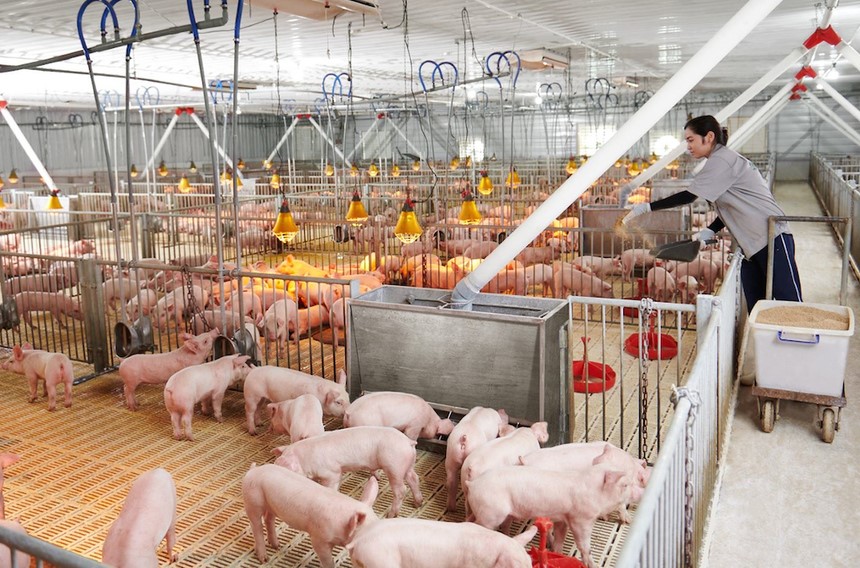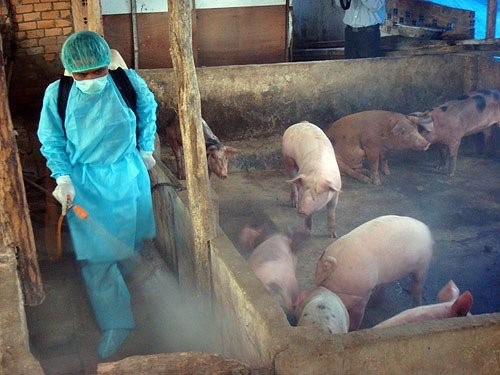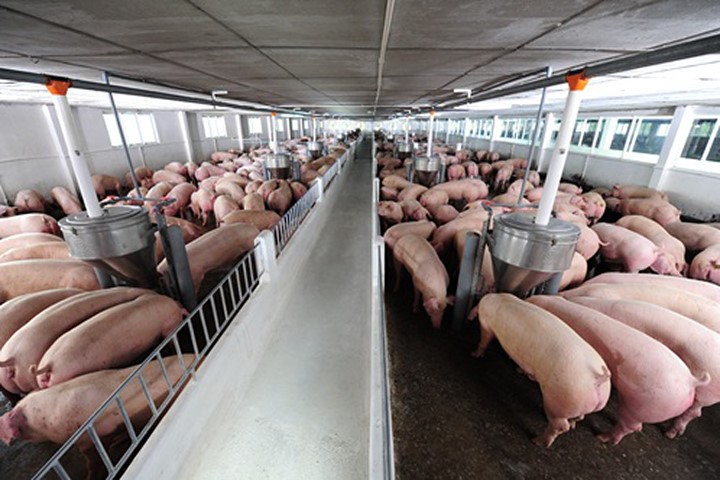Biosecurity farming is a measure to help protect the health of pigs, prevent disease and minimize negative impacts on the environment.
Nowadays, as livestock farming is increasingly developing, it also leads to many complicated and dangerous diseases. Therefore, with disease prevention and treatment in pigs, farmers need to implement biosafety farming. Biosafety farming is the synchronous application of measures to prevent animals from contacting pathogens, to protect pig’s health, and the health of the whole community and the environment.
1. ABOUT THE FARM
The barns need to be designed properly, far from residential areas, easy to clean, well-ventilated, with a complete water supply and drainage system. The farm must have a wall or fence to control people and animals entering and leaving the farm. Separate areas must be arranged: livestock area; sanitation area, disinfection of livestock equipment and tools; feed and medicine warehouse, quarantine area for sick pigs, etc. There must be a disinfection pit at the entrance to the livestock farm, the barn area and at the entrance to each row of barns. Change labor protection equipment for people entering and leaving the livestock area. There should be a net around the barn and other measures to prevent insects and other intermediate hosts from transmitting diseases, such as rats, birds, flies, mosquitoes, etc.

Equipment and tools for feed and water must be safe and easy to clean. Other tools in the cage must be easy to clean after each use.
Food warehouses, veterinary medicine warehouses, chemical and disinfectant warehouses, equipment warehouses, etc. must be designed to ensure ventilation, no humidity, and easy cleaning and disinfection.
There is a waste collection and treatment area. If possible, raise pigs using the spaced-out method (each pen has a space of 0.8-1m) to minimize contact between pigs in pens.
2. ABOUT THE BREED
Pigs purchased for breeding must have a clear origin, be healthy, and have full quarantine papers. Pigs imported from outside the province must have a quarantine paper, and before entering the herd, they must be quarantined for at least 2 weeks.
3. CLEANING AND DISINFECTION
– Regularly clean the barn.
– Periodically spray disinfectant around the livestock area and barn at least twice a week; Spray disinfectaVB nt in the barn at least once a week when there is no epidemic, and at least twice a week when there is an epidemic.
– Spray disinfectant on pigs at least twice a week when there is an epidemic with appropriate disinfectant solutions according to the manufacturer’s instructions, such as Iondin @ or Dexon Super, etc.
– Periodically clear bushes, unclog and clean drains outside the barn at least twice a month. Feed and water troughs must be cleaned daily.
– Equipment, tools and means used in animal husbandry must be regularly disinfected.
– After each breeding period, the barn and equipment must be cleaned and disinfected, and the barn must be left empty for at least 7 days before pigs are brought in. In case of an epidemic, if the herd is re-raised, the barn must be left empty for at least 30 days and must be approved by the local authorities:
– Waste collected for treatment must be placed at the end of the barn, far from the barn area and water supply. Waste must be collected daily, transferred to a centralized location and treated using appropriate methods.
– Reused as organic fertilizer if possible, after being treated for disease safety.

3. DISEASE CONTROL
– Have a disease prevention process suitable for each type of pig and perform full and correct vaccination.
– Monitor the health status of the pig herd regularly to promptly detect, isolate and treat disease cases.
– Apply the measure of raising “all in and all out” to limit the spread of disease.
– Minimize people and other animals entering and exiting the livestock area.
4. ABOUT RAW MATERIALS, FEED, WATER
– Ensure that incoming feed, water and supplies are free of pathogens.
– Use feed of clear origin, not spoiled, moldy and within expiry date, ensuring quality and safety. In case of using salvage feed, it must be heat treated before feeding. Do not use leftover feed in the feed trough of pigs that have been sold and feed of pigs that have been infected with disease for new pigs.
– Drinking water must be clean and of guaranteed quality, and biological products should be periodically added to enhance resistance and increase digestion and absorption for pigs. Promulti ws yeast can be added to enhance resistance and increase digestion and absorption for pigs.

Biosafety pig farming not only protects the health of the pig herd but also ensures food safety for consumers and protects the environment. The serious and continuous application of biosafety techniques and measures will help pig farms develop sustainably, minimize disease risks and increase economic efficiency. To achieve this, there needs to be close coordination between farmers, veterinary experts and authorities.
